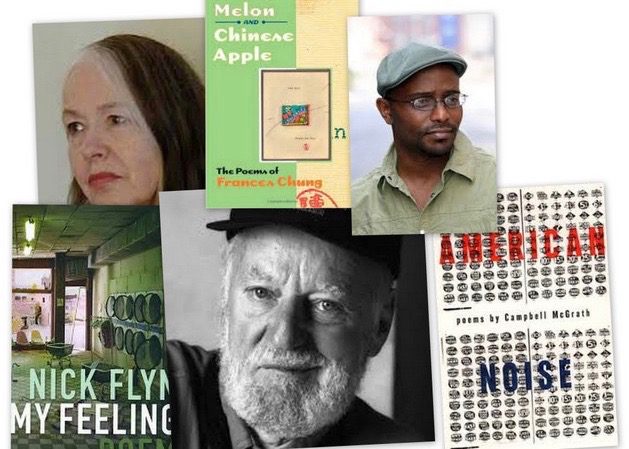
I’m spending National Poetry Month at the Millay Colony, former home of Edna St. Vincent Millay. My colleague and friend, poet and writer Jen Fitzgerald, will be writing the Mixtape column this month—and we are all lucky for it. Enjoy Jen’s robust selections and I’ll see you in May. –Anna
We love poems that motor, that pull us down the page and over to the next. Whether it be the narrative, the prosody, or the element of surprise, we are captivated. These collections feature poems that not only understand the urban but beat the concrete right alongside the boots. City streets are about sound, ambient and primary, mechanical and vocal. These collections all embody that movement.
- The Key to the City by Anne Winters
Winters writes of a New York City that I first knew. Her lens is focused on the movement of the people, the workers, and the survivors that keep the city in the state of inertia for which it has grown famous. She moves underground, back up and over rooftops to give us all the angles we need to see.All seas are seas in the moon to these lonely and full of light. High above laundries and rooftops the pinstriped silhouettes speak nightmare as do the faces full of fire and orange peel. Every citizen knows what’s the trouble; America’s longest river is—New York; that’s what they say and I say so.
- American Noise by Campbell McGrath
Before I had realized, I was half way through this collection on the first read. The poems motored from state to state, carrying me over our varied terrain and through the undeniable American quirkiness that we call “spirit.” When I reentered the collection to do more than simply devour it, I found such precision, such detail, and even musicality. This collection is Big American like Montana skies, Texas Steak, and endless interstates. - Crazy Melon and Chinese Apple by Frances Chung
This poet knows the inner/outer dichotomy well. She shows us life in New York City’s China Town in 1980s by juxtaposing what happens indoors with what happens when she steps outside. Her inner life of cultural expectations, observation, and search for the self happens amidst the confusion of her city. She contextualized the inner struggle by showing us the people of her city as she sees and understands them. - Coney Island of the Mind by Lawrence Ferlinghetti
Even if Ferlinghetti’s cadence was less like a step-in-time march, the content of his poems would still drag us, head long, down the page. There is a real engine in his work, a sonic engine and visual engine that work together to create full-throttle imagery. Even the poems move and sway on the page, like they refuse to be pinned down.I am waiting to get some intimations of immortality be recollecting my early childhood and I am waiting for the green mornings to come again youth’s dumb green fields come back again and I am waiting for some strains of unpremeditated art to shake my typewriter and I am waiting to write the great indelible poem
- leadbelly by Tyehimba Jess
It moves like music, like colloquial. It moves like story, it moves in form. It walks like a person, it walks through a life. The lack of capitalization makes the reader feel like they’ve jumped on train already in motion, and they have. These poems have been in motion for a century, just waiting for someone to pluck them out on the page. - My Feelings by Nick Flynn
This collection uses narrative to propel itself forward. The story is so compelling that the reader may not even realize they are knee-deep in lyric moments. The speaker has waded through a layer of hell, reached the other side, and turned around to survey the terrain. What comes to him is a mixture of memory, fear, and realization—which sometimes must be elevated to the surreal just so that it can be described.
Support your favorite independent bookseller or shop:
***
Original logo art by Esme Blegvad.









